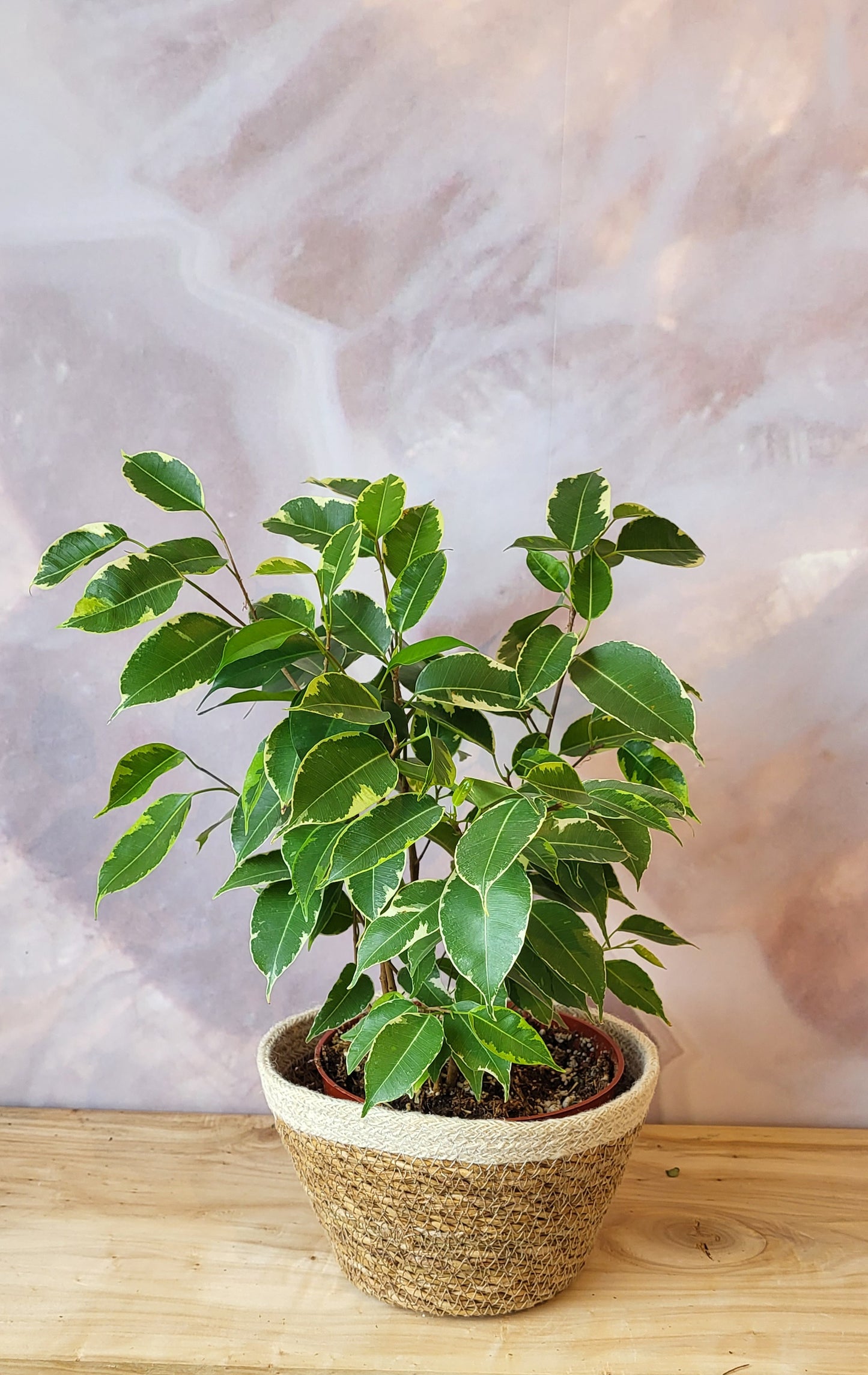Calabrese Greenhouse, Inc.
Ficus Benjamina 4"
Ficus Benjamina 4"
Couldn't load pickup availability
*Does not include planter pot
Light
The weeping fig needs a bright room with plenty of indirect sunlight, and perhaps even a little direct sun in the morning. In its native habitat, it is often grown in semi-shady conditions, but indoors it needs good light to thrive. You must find a good, bright spot for it and keep it there. Note that this plant has a high intolerance for being moved, even if it is to find better lighting conditions, so it's best not to experiment with trying to find the right spot.
Soil
Any good, fast-draining potting soil will likely do. Weeping figs do not require soil that is especially high in nutrients or organic matter. If repotting, use a soil-based potting soil that contains perlite, sand, and vermiculite for improved drainage.
Water
Keep the plant steadily moist, but do not allow it to sit in water or it will drop leaves and may develop root rot. In their native environment, plants typically drop leaves at the beginning of the dry season, which makes them acutely sensitive to changes in moisture. Make sure your watering schedule is consistent.
Temperature and Humidity
Ficus trees do best with nighttime temperatures between 65 and 70 degrees Fahrenheit and daytime temperatures between 75 and 85 degrees Fahrenheit. Consider setting your thermostat to regulate temperature fluctuations in your home. In the summertime, do not use heavy air conditioning, since weeping figs will suffer if the indoor temperature drops below 70 degrees Fahrenheit.
As tropical natives, weeping figs prefer high humidity. Low relative humidity can result in leaves that are dry and shriveled up.2 Consider using a humidifier to regulate humidity levels in your home. Keep the soil moist around the base of your tree and mist the tree’s leaves occasionally to prevent them from drying out.
Fertilizer
These plants are heavy feeders and need plenty of fertilizer throughout the growing season. Feed your ficus with slow-release pellets at the beginning of the growing season. They are rapid growers and will benefit from monthly fertilization in the spring and summer and once every two months in the fall and winter.
If your plant is dropping leaves despite having ideal lighting, temperature, humidity, and fertilizer levels, try supplementing with a little magnesium and manganese.
Share


